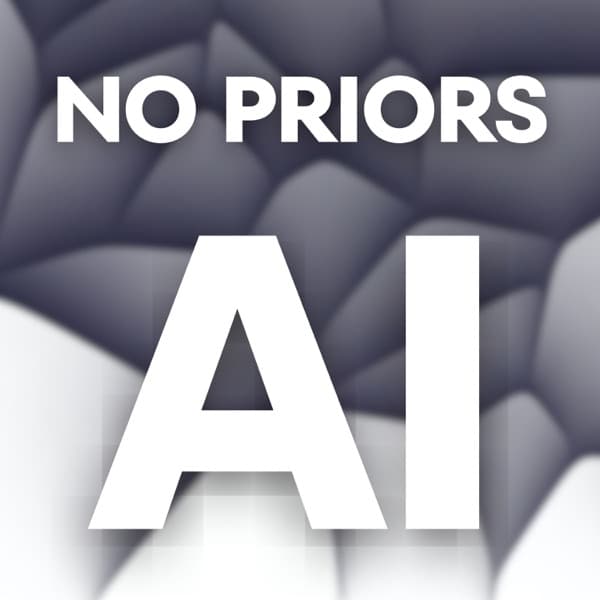The Twenty Minute VC (20VC): Venture Capital | Startup Funding | The Pitch: The discussion focuses on Odoo's unique business model and growth strategy, emphasizing a commitment to product quality and a non-traditional management approach.
The Twenty Minute VC (20VC): Venture Capital | Startup Funding | The Pitch - 20VC: The $5BN Company Built from the Belgian Countryside | The Story of Odoo: The Company with No Plans to Sell, IPO & Their Billionaire Founder Who Does Not Care About Money with Fabien Pinckaers, Founder & CEO @ Odoo

Fabian Pinkers, founder of Odoo, shares insights into building a successful company without traditional management structures. Odoo, a Belgian company, has grown to 5,000 employees and 650 million in ARR by focusing on product quality and customer satisfaction. Pinkers emphasizes the importance of being obsessed with the product and maintaining a long-term vision, avoiding IPOs to keep the company focused on innovation rather than short-term financial goals. Odoo's open-core business model allows for a mix of free and paid features, which has been crucial in scaling the company. Pinkers also highlights the importance of internal promotions and avoiding external hires for leadership roles to maintain company culture. The company prioritizes autonomy and responsibility among employees, with a unique approach to budgeting and management that eschews traditional processes like recurring meetings and strict KPIs. This approach has allowed Odoo to maintain a high growth rate and profitability without external funding since 2014.
Key Points:
- Odoo's growth is driven by a focus on product quality and customer satisfaction, avoiding traditional management structures.
- The company uses an open-core business model, offering a mix of free and paid features, which has been key to scaling.
- Fabian Pinkers emphasizes internal promotions and avoids external hires for leadership roles to maintain company culture.
- Odoo prioritizes autonomy and responsibility among employees, avoiding traditional processes like recurring meetings and strict KPIs.
- The company has maintained profitability and high growth without external funding since 2014.
Details:
1. 🚀 Passion-Driven Success: Odoo's Founding Philosophy
- Success requires an obsession with the mission or goal, emphasizing a passion-driven approach.
- A strategic decision to keep prices low is interconnected with purchasing shares in every transaction, demonstrating a commitment to accessibility and investment.
- Managers actively purchase shares, reinforcing their dedication to the company's success and philosophy, which fosters a strong internal culture.
- The consistent policy of not selling shares indicates a long-term vision and steadfast commitment to the company's foundational principles.
- By avoiding an IPO, Odoo focuses on maintaining control and a unique growth strategy, prioritizing strategic autonomy over short-term financial gains.
2. 📈 Odoo's Growth: From Domain Name to Market Leader
- Odoo has achieved an astonishing 650 million in annual recurring revenue (ARR).
- The company employs over 5,000 people.
- Odoo serves more than 50,000 companies as customers.
- Odoo's strategic focus on modular, customizable ERP solutions has been pivotal in attracting a diverse client base across various industries.
- The company has expanded its global footprint significantly, leveraging partnerships and a strong community of developers.
- Odoo's commitment to continuous improvement and innovation in its software offerings has strengthened its market position.
3. 💼 Innovative Business Models: Open Source to Open Core Transition
- Fabian Pinkers critiques traditional management structures, arguing that titles often lack substance, and common management practices are flawed.
- He suggests reevaluating these management strategies could lead to significant improvements in business operations.
- The discussion provides insights that challenge conventional corporate management paradigms and encourages innovation.
4. 🌐 Overcoming Challenges: Scaling and Global Expansion
- Kajabi's customers have collectively generated over $8 billion in total revenue, demonstrating the platform's capacity to support substantial business growth.
- Kajabi users retain 100% of their earnings, with the average creator earning over $30,000 annually, highlighting the platform's profitability for users.
- For $69 per month, Kajabi offers an all-in-one suite of tools, including websites, email marketing, digital products, payment processing, and analytics, providing comprehensive support for business operations.
- Kajabi supports building private communities, paid newsletters, and course launches without taking a revenue cut from users, emphasizing its user-centric revenue model.
- A featured case study: A creator used Kajabi to launch a new course and saw a 50% increase in revenue within three months, showcasing the platform's effectiveness in driving growth.
5. 🤝 Building a Unique Culture: Leadership, Team Dynamics, and Recruitment
5.1. Partnering with Kajabi and AlphaSense
5.2. Business Insights from Mercury and Odoo
5.3. Odoo's Journey: Challenges and Strategic Decisions
5.4. Product Development and Community Engagement
5.5. Odoo's Competitive Edge and Market Strategy
5.6. Leadership and Team Culture at Odoo
6. 📊 Strategic Financial Decisions: Fundraising and Ownership
- The US company faced growth struggles a decade ago, requiring relocation of key personnel to address issues with consultant overload and project quality.
- A restructuring involved bringing a top consultant from Belgium to the US to manage complex projects, highlighting the importance of strategic talent deployment in overcoming operational challenges.
- Initial resistance to dropping KPIs in favor of project delivery focus reveals the complexity and potential misuse of performance metrics in evaluating talent.
- The recruitment process emphasizes practical assessments over resumes, with on-the-job tasks and IQ tests proving more predictive of performance than traditional interviews.
- The company has streamlined recruitment to a five-day automated process, enhancing speed and efficiency in talent acquisition.
- New hires are often young, with an average age of 26, and are recruited based on their practical skills and cognitive tests rather than work experience or titles.
- Cultural fit and competencies are critical, with a focus on ensuring that recruits are both technically capable and aligned with company values.
- The organization emphasizes purpose and impact as key motivators for the younger workforce, contributing to building a large company with a youthful average age.
- Over 90% of dismissals result from competency issues, underscoring the need for rigorous skill assessments during hiring.
7. 🌍 Navigating Global Markets: Expanding Odoo's International Presence
7.1. Training and Team Structure
7.2. Management Approach
7.3. International Growth Strategy
7.4. Growth Challenges at Different Stages
7.5. Hiring Philosophy
8. 🎯 Visionary Leadership: Sustaining Growth and Industry Disruption
- Flexibility in departments: Ensure departments remain adaptable to meet diverse employee needs and characteristics, fostering a supportive work environment.
- Hiring decisions: Address hiring mistakes promptly by implementing the principle 'when there is a doubt, there is no doubt' to make timely firing decisions, enhancing team efficiency.
- International expansion: Success is driven by selecting the right director rather than focusing solely on geography, emphasizing leadership quality over location.
- Internal promotions: Promote from within to management positions to maintain cultural alignment and enhance employee morale, providing clear career paths.
- Tier two cities: Establish offices in tier two cities to boost employee retention, leveraging less competitive talent markets compared to tier one cities.
- Retention strategies: Focus on retaining experienced employees who are crucial for business efficiency and growth, using targeted retention strategies.
- Competition perception: Concentrate on delivering a comprehensive suite of affordable business applications rather than on directly competing with others.
- Revenue growth: Achieve significant revenue growth, with a 50% annual increase, reaching $550 million this year, driven by strategic pricing and product offerings.
- Pricing strategy: Maintain low prices to commoditize the market and provide accessible technology solutions for all businesses, enhancing market penetration.
- Profitability: Sustain profitability without external funding since 2014, enabling consistent growth and operational independence.
- Valuation focus: Prioritize revenue and transformative impact over valuation, aiming to develop software solutions that change industry standards.
Included Channels
 Lex Fridman Podcast
Lex Fridman Podcast All-In with Chamath, Jason, Sacks & Friedberg
All-In with Chamath, Jason, Sacks & Friedberg Modern Wisdom
Modern Wisdom Greymatter
Greymatter In Depth
In Depth a16z Podcast
a16z Podcast Lenny's Podcast: Product | Growth | Career
Lenny's Podcast: Product | Growth | Career Lightcone Podcast
Lightcone Podcast No Priors AI
No Priors AI The Twenty Minute VC (20VC): Venture Capital | Startup Funding | The Pitch
The Twenty Minute VC (20VC): Venture Capital | Startup Funding | The Pitch How I Built This with Guy Raz
How I Built This with Guy Raz BG2Pod with Brad Gerstner and Bill Gurley
BG2Pod with Brad Gerstner and Bill Gurley Latent Space: The AI Engineer Podcast
Latent Space: The AI Engineer Podcast




